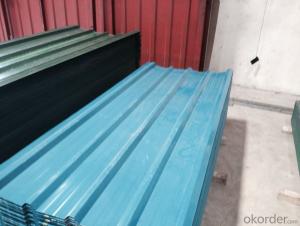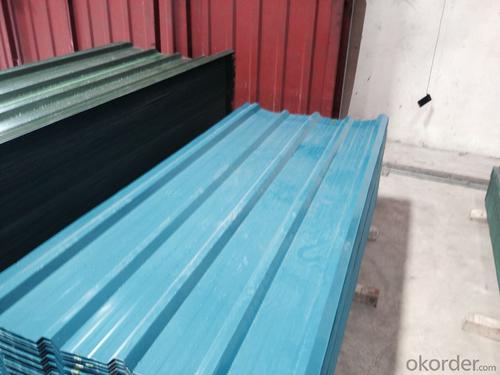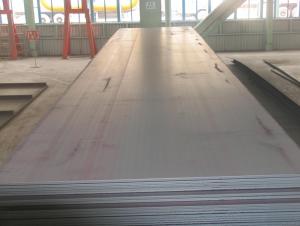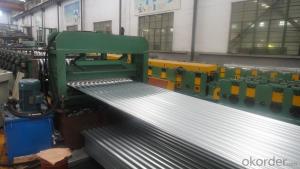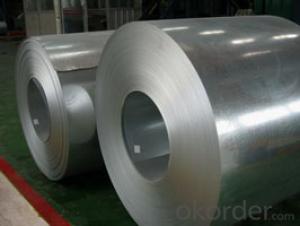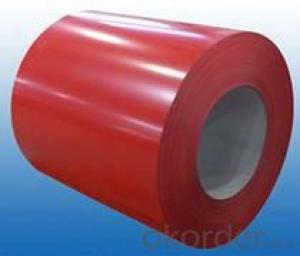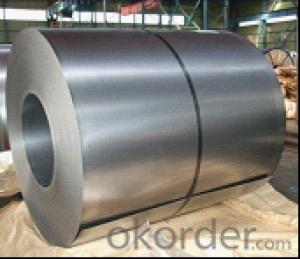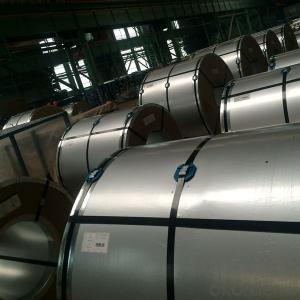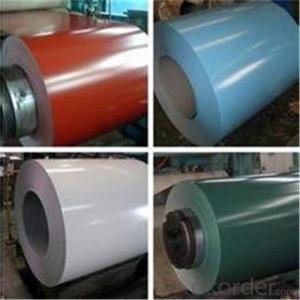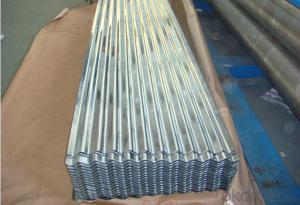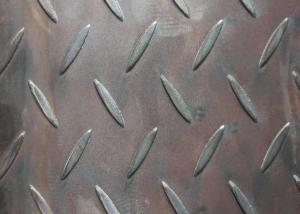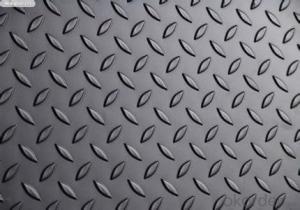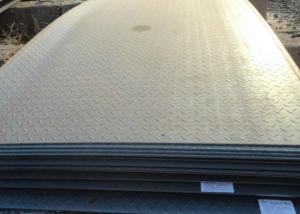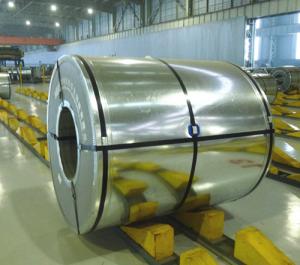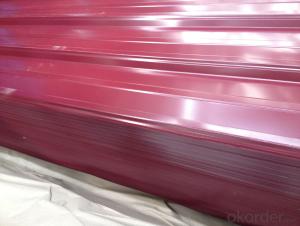Color coated corrugated galvanized Steel Coils/Sheets from China
- Loading Port:
- China main port
- Payment Terms:
- TT OR LC
- Min Order Qty:
- 111 m.t.
- Supply Capability:
- 100000000 m.t./month
OKorder Service Pledge
OKorder Financial Service
You Might Also Like
1) AVAILABLE DESIGNATION OF (Prepainted galvanized steel coils) printed PPGI coils
Quality Q/BQB 440-2003 JIS G3312-1994 EN 10326-2004 ASTM A653-02a
EN 10327-2004 (BASE PLATE)
(BASE PLATE)
Commercial Steel TDC51D CGCC DX51D+Z/AZ CS Type A/B/C
Forming Steel (TSt01,TSt02,TSt03) CGCD1 FS Type A, Type B
Drawing TDC52D /TDC53D - DX52D+Z/AZ DDS TYPE A/C
Steel DX53D+Z/AZ
Structural TS280GD(TStE28) CGC400 S280D+Z/AZ SS275
Steel TS350GD(TStE34) CGC440 S350D+Z/AZ SS340 Class1
2) OUR SPECIFICATION OF (Prepainted galvanized steel coils) printed PPGI coils
Available Size:
Manufacturer Thickness Width Length of plate Inner diameter of coil
JIANGSU HUIYE STEEL SHEET CO.,LTD 0.2-1.2mm 800/914/1000/1200/1219/1250mm 1000-6000mm 508mm/610mm
Coated Mass OF (Prepainted galvanized steel coils) printed PPGI coils:
Base plate Available Coated Mass(g/m^2)
Galvanized Steel 80, 100, 120, 160, 180
Galvalume Steel 50, 70, 150
Available Painting OF (Prepainted galvanized steel coils) printed PPGI coils:
Category of Painting Item Code
Polyester PE
High-durability polyester HDP
Silicon modified polyesters SMP
Polyvinylidene fluoride PVDF
Easy-Cleaning —
Painting Thickness Top side: 20+5microns;
Bottom side: 5~7microns.
Color System Produce according to RAL Color System or as per buyer’s color sample.
Painting structure Top surface Bottom surface
Primer coating No coating 1/0
Primer coating Primer coating 1/1
Primer coating + Finish coating No coating 2/0
Primer coating + Finish coating Primer coating or single back coating 2/1
Primer coating + Finish coating Primer coating + Finish back coating 2/2
- Q: What is the difference between a painted and laminated steel sheet?
- A painted steel sheet is coated with a layer of paint, while a laminated steel sheet has a layer of plastic or other material laminated onto the surface. This makes laminated steel sheets more resistant to scratches and damage, while painted steel sheets offer a wider range of color options.
- Q: Can steel sheets be used in high-temperature environments?
- Yes, steel sheets can be used in high-temperature environments. Steel is known for its high strength and resistance to heat, making it a suitable material for applications that involve elevated temperatures. However, the specific type of steel and its composition should be considered to ensure it can withstand the desired temperature range without excessive deformation or deterioration.
- Q: Are steel sheets resistant to radiation or electromagnetic interference?
- Steel sheets are not inherently resistant to radiation or electromagnetic interference. However, their thickness can provide some level of shielding against certain types of radiation, such as gamma radiation. For protection against electromagnetic interference, additional layers or coatings specifically designed to block or absorb electromagnetic waves may be required.
- Q: Can steel sheets be used for electrical applications?
- Yes, steel sheets can be used for electrical applications. While steel is not a good conductor of electricity, it can be used as a protective casing or enclosure for electrical components or as a structural support in electrical systems.
- Q: Do the steel sheets have any specific certifications?
- The quality and compliance of the steel sheets are ensured through specific certifications. These certifications are typically granted by reputable organizations like the International Organization for Standardization (ISO) or specific regulatory bodies based on the country or region. The common certifications for steel sheets include ISO 9001 for quality management systems, ISO 14001 for environmental management systems, and ISO 45001 for occupational health and safety management systems. Furthermore, there might be industry-specific certifications, such as the American Society for Testing and Materials (ASTM) standards or the European Committee for Standardization (EN) certifications. These certifications guarantee that the steel sheets meet specific criteria for various attributes, including material composition, mechanical properties, and manufacturing processes.
- Q: Can steel sheets be used for making kitchen appliances?
- Yes, steel sheets can be used for making kitchen appliances. Steel is a commonly used material in the manufacturing of kitchen appliances due to its durability, heat resistance, and easy maintenance. Steel sheets can be molded and shaped into various kitchen appliance components such as refrigerator doors, stovetops, sinks, and countertops.
- Q: Do steel sheets require any special storage or handling?
- Yes, steel sheets require special storage and handling to ensure their integrity and avoid any damage. They should be stored in a clean, dry, and well-ventilated area to prevent corrosion. Additionally, they should be stacked in a way that prevents distortion or bending. When handling steel sheets, it is important to use proper lifting equipment and techniques to prevent accidents and maintain the quality of the sheets.
- Q: What are the applications of steel sheets in construction?
- Steel sheets are widely used in construction for applications like roofing, flooring, wall cladding, and structural components due to their durability, strength, and versatility. They provide a reliable and long-lasting solution for various construction needs, ensuring stability, fire resistance, and protection against harsh weather conditions. Additionally, steel sheets can be easily customized, allowing for flexibility in design and construction processes.
- Q: Are steel sheets suitable for flooring applications?
- Yes, steel sheets are suitable for flooring applications. Steel sheets offer many advantages that make them an ideal choice for flooring. Firstly, steel sheets are extremely durable and can withstand heavy loads and high foot traffic. They are resistant to wear and tear, making them long-lasting and cost-effective in the long run. Additionally, steel sheets are fire-resistant, which enhances the safety of the flooring. They are also resistant to moisture, making them suitable for areas with high humidity or where water may be present. Furthermore, steel sheets are easy to clean and maintain, requiring minimal effort and cost for upkeep. They are available in a variety of sizes, thicknesses, and finishes, allowing for customization to suit different flooring requirements. Overall, steel sheets offer a strong, durable, and versatile flooring option that can be used in various applications, including industrial, commercial, and residential settings.
- Q: What is the average weight of a steel sheet per square meter?
- The average weight of a steel sheet per square meter can vary depending on the thickness and type of steel being used. However, a general estimate for mild steel sheets is around 7.85 kilograms per square meter. It is important to note that this weight can vary slightly based on the specific composition of the steel and any additional coatings or treatments applied to the sheet.
Send your message to us
Color coated corrugated galvanized Steel Coils/Sheets from China
- Loading Port:
- China main port
- Payment Terms:
- TT OR LC
- Min Order Qty:
- 111 m.t.
- Supply Capability:
- 100000000 m.t./month
OKorder Service Pledge
OKorder Financial Service
Similar products
Hot products
Hot Searches
Related keywords
